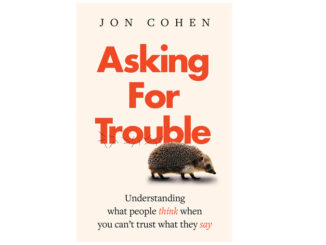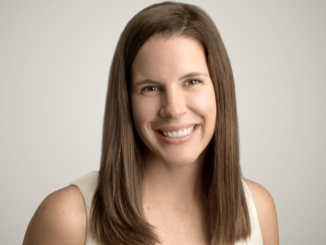
by Paula Rosecky, Paula Rosecky & Company, Seattle, Washington paula@paularosecky.com
While researchers may not technically consider themselves to be coaches, one of their main goals is to create an atmosphere for participants to feel open enough to share opinions, beliefs, and ideas. Creating that environment requires a few key skills that are also used in a coaching relationship. I want to make you more aware of these skills so you can intentionally use them to up your qualitative game. By bringing in these skills more consciously, you will deepen your qualitative practice and better connect to your clients and participants. After all, we could all use a bit more connection right now!
Coaching Defined
Let me start by defining coaching. There are many definitions, but for the purpose of this article, I will define coaches as facilitators of learning. Coaches are not consultants, advisors, or experts on how an individual should address a problem. Good coaches may teach a concept, but mostly they help their clients find their own answers. Coaching is grounded in positive psychology, neuroscience, cognitive behavioral psychology, and performance science. It is the practice of accessing the wisdom of your right brain and applying that which you already know to be true for yourself. Coaching prompts people to think about their dreams and then helps them manage their brains when they start taking steps in the direction of those dreams.
A. Begin with the End in Mind
“If you were at the end of your life looking back, how do you want to be remembered?” This is a classic individual coaching question popularized by Steven Covey. Let’s spend a moment on you, then we’ll dive into your clients’ and participants’ “ends.”
How would you answer the question? What kind of researcher do you want to be? How connected are you to your professional dreams? How much business do you really want? How come? What about your personal dreams? Who do you want to be in your life?
Take a moment, think about it, and write it down. We’ll revisit your answers at the end of this article.
You ask similar questions of your research clients as well. Working on behalf of the companies they represent, they have dreams, visions, and goals, too. They’re innovating, creating, and developing the world’s next best product or service. Keeping the end in mind gives the project team direction, or a rudder, when they face difficulties in their industry or their jobs. Even if they need to adapt, knowing their vision or set of goals will help everyone stay on track. How can you continue to help your clients keep the end in mind?
You also ask this of those amazing humans that researchers call participants. Participants have hopes, dreams, needs, and aspirations, too. Knowing their hopes and dreams helps you help your clients create the next product or service that will make an impact. Ultimately, a researcher wants to know how the concept, product, or service being explored makes their lives better.
It is in the interest of our evolvement as humankind to keep dreaming. That’s how we got to where we are today, and we need to keep dreaming.
Growth Happens in the Uncomfortable
When you thought about your aspirations, how did you feel? Did you get a bit uncomfortable? If so, you’re on the right track! Creating a new vision and goals for yourself can be uncomfortable. This is how you know you’re headed in the right direction. Keep this in mind as your clients evolve, stretch, and grow. They are likely uncomfortable, too, and as researchers, and fellow humans, we can have empathy for them.
B. Hold Plenty of Space
If you’ve been in the moderating or facilitation business for a while, you’ve likely run across the idea of holding space. The conversations we have as qualitative researchers do not look like conversations we have with friends or family. While friends react to what someone might say and agree or disagree with them, we don’t do that in research (or coaching). We take in people’s ideas and beliefs without judgment. “Without judgment” is the operative phrase here. As humans, it’s natural to judge our circumstances, other people, and ourselves, so it’s a simple concept but not easy to do. I like to imagine each participant’s thought as an offering, sitting in the palm of my hand as I examine it with curiosity, care, and respect. This is also how I approach a coaching relationship.
Four Types of Space to Consider as You Design Your Research Sessions
Since discovering the four kinds of Japanese space, I now think of space in a larger context when designing a facilitated group or coaching session. Let’s take an imaginary trip to Japan to think more broadly about space.
- Wa: relational space where personal connections are made

When considering wa, you are thinking about how space benefits or lessens the quality of relationships. So, you might meet a participant at a cozy café to interview them about a sensitive topic rather than at a noisy restaurant. If you’re conducting an in-person contextual inquiry, your relationship energy with your participant will be very different walking through a store than if you meet outside of a local farmers market. If you want to have an intimate dinner, you may avoid a bar with TVs on.
- Ba: knowledge mobilizing space; consciously using elements to create connections that are more likely to produce new knowledge or experiences
The open office concept is a demonstration of ba as it allows for people to interact in ways that may not have been possible if each person had their own space with the door closed. Or, a new product idea wouldn’t have been discovered had you not used LEGO® or arts and crafts in your brainstorming session. Sticky notes help increase ba if they are left up on a wall (or digital whiteboard) to be added to over time.
- Tokoro: the physical location or state of being
Tokoro situates the activity in a bigger story and adds context. For example, a building cannot be in a city without the city being present in the building. When Starbucks is looking for the best location for their cafés, they are considering tokoro. If you want to convey inclusion and belonging in your session, for example, consider the placement of your chair in relation to everyone else.
- Ma: negative space or quiet, creating time for awareness
Have you ever been to a meeting where the schedule was so packed that there wasn’t a moment to think? This is an example of creating a negative environment for awareness and quiet time. The next time you want to give pause for reflection in your discussion guide, you’re allowing for ma. This time allows the brain to reconcile contradictions, tensions, and cognitive dissonance. Sometimes letting someone say something and letting it soak in helps them find the next thought that may be even more powerful than the last thought. Structure your guide so that it’s easy to take something out to create more ma.
In my facilitation as well as coaching work, I’m intentional about allowing for time to reflect, time to ask more meaningful questions, and time to allow for some meandering to find deeper answers.

A Note about Plenty
When a mastermind coaching colleague declared plenty (as in abundance) as a company value, I immediately explored adding it to my own list of values. It’s useful for me to think of there being an abundance of resources in life and business (e.g., plenty of time, plenty of ideas, and plenty of space).
When you’re crafting your next one-on-one or group session, how might you design it for plenty of listening, plenty of conversation, and plenty of space? How would more space in your next project or discussion guide benefit you, your clients, and participants? Now, I know what you’re thinking, “My clients always want me to pack in more than I have time for.” How might you influence your client to adopt the concept of plenty (in this case, plenty of ma)? It’s important, and it’s up to you.
C. Practice Extreme Presence
Mindfulness Matters
It’s no secret that mindfulness helps us regulate emotions, decrease stress, and maintain focus. Taking a deep breath—or three—is a well-known way to get into your body and be more present. (As a matter of fact, stop reading and do it right now.)
Here are a few more ways to get present before beginning a session, having a conversation with a difficult client, or giving a presentation:
- Wiggle your toes as you settle in your seat.
- Rub two fingertips together so intently that you feel the ridges on your fingertips.
- Notice the eye color of the person you’re speaking to (online or in person).
- Imagine your audience as a child.
When you get into your body, you’ll notice that your worries soften, and you can better center yourself for the next best question or the most useful thing to do. Take a moment to settle in. No one even needs to know you’re doing it!
D. Bringing It Back to You
One of the things that attracted me to coaching was the use of these three key skills in a way that helps individuals with their personal and career goals, like the way qualitative researchers help clients realize their business goals.
As you approach your next project, consider these questions:
- How might you design your discussion guide to allow for more wa, ba, tokoro, or ma to deepen a connection or create new experiences?
- How might you ask another open-ended question, soften language, or offer up an observation to have the participant confirm or take the situation elsewhere?
- What’s an even better question to ask?
Now, let’s go back to what you wrote down about your dreams. Reread it. If you picture yourself as that person right now or on your way, what’s one small step you can take to get closer to that “end”? What conversation do you need to have? How would you reframe a problem you’re facing? How can you increase your capacity to respond, rather than react, to people and situations?
Keep dreaming about your future with intention. Keep accessing the wisdom of your brain and heart. Keep reframing the problems you and your clients face, and keep taking action in the direction of your qualitative dreams!
Acknowledgements
Concepts in this article were informed by Positive Intelligence (PQ) mental fitness coaching, and The Life Coach School coaching and Daniel Stillman, Conversation Designer.




